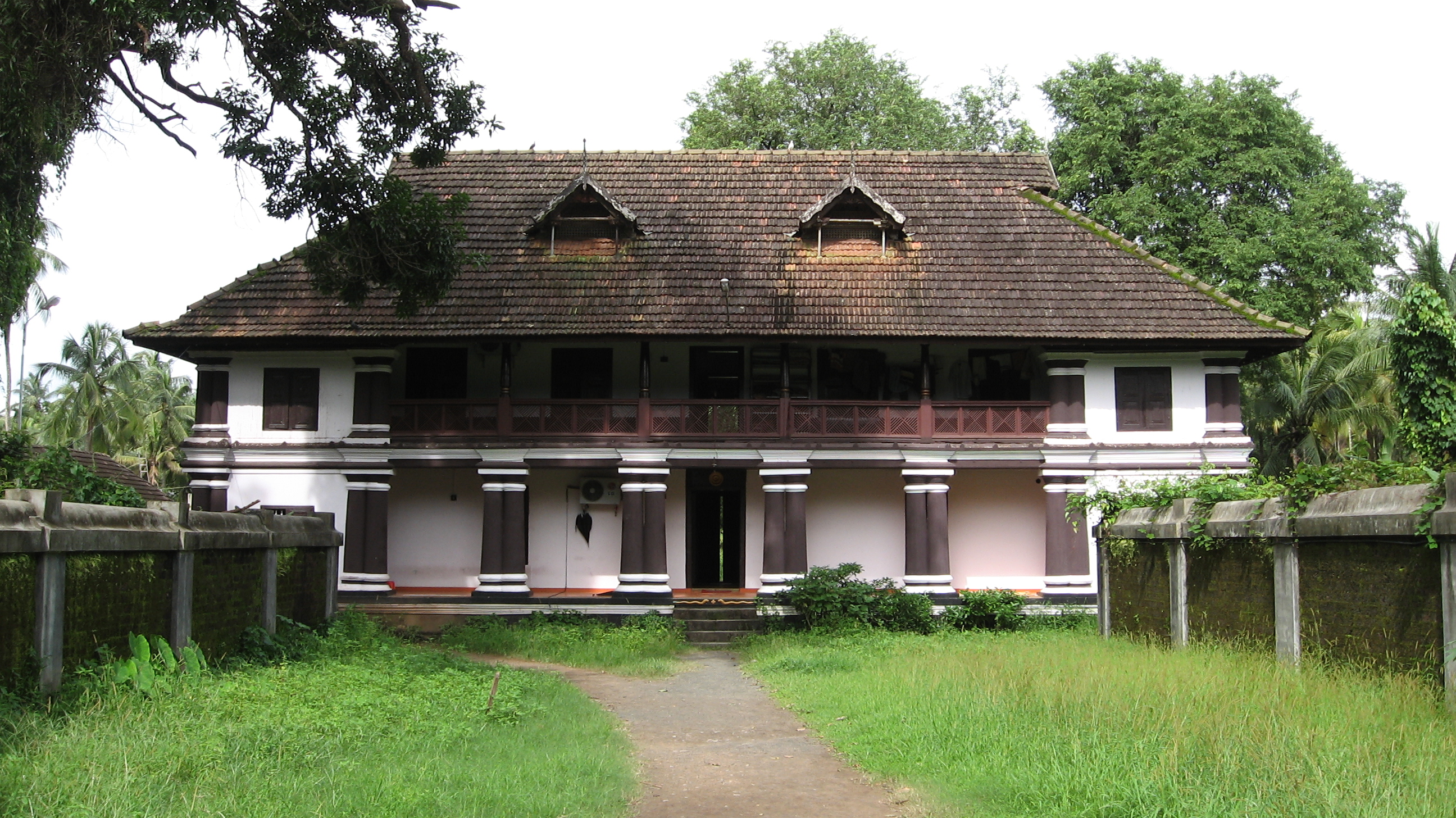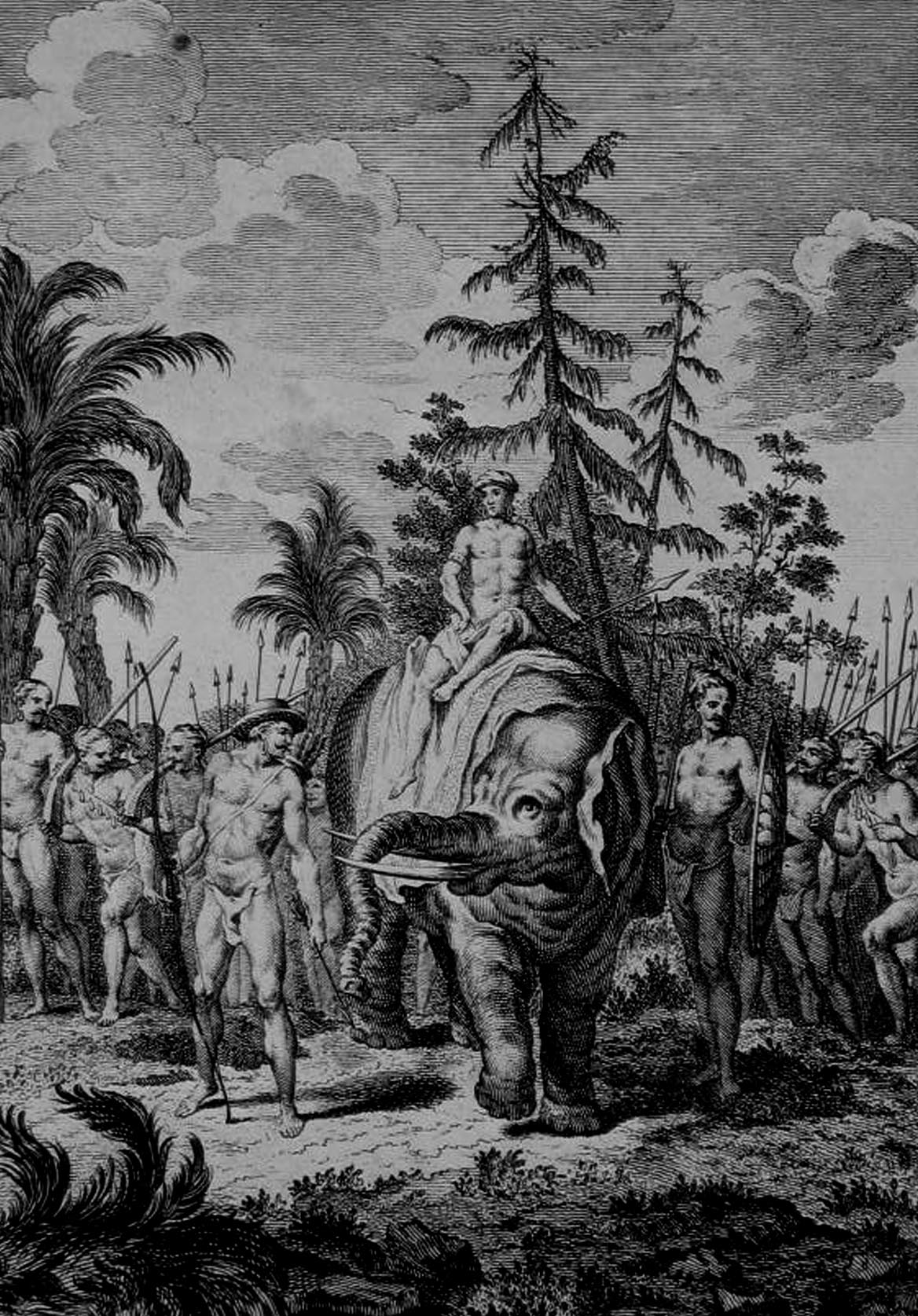|
Tharavadu
Tharavad, also spelled as Tharavadu () (തറവാട്), is the Malayalam word for the ancestral home of aristocratic Nair families in Kerala, which usually served as the common residence for the Matrilineality, matrilineal joint family under the Marumakkathayam system practiced in the state. German linguist Hermann Gundert, in his Malayalam—English dictionary published in 1872, defines a ''Tharavadu'' as, "An ancestral residence of land-owners and kings", and also as, "A house, chiefly of noblemen". It was classically the residence of Jenmimar, but contemporary usage of the word is now more generic to all social classes and religions in Kerala. By extension, the word refers not just to the family's house but also to the extended family that shares that house. Heads of tharavadus - usually the eldest living male - were known as Karnavar, ''Karnavars'', and junior members as ''Anandravans''. Architecture Inseparable from the traditional concept of a tharavad is, histo ... [...More Info...] [...Related Items...] OR: [Wikipedia] [Google] [Baidu] |
Nair
The Nair (, ) also known as Nayar, are a group of Indian Hindu castes, described by anthropologist Kathleen Gough as "not a unitary group but a named category of castes". The Nair include several castes and many subdivisions, not all of whom historically bore the name 'Nair'. Fuller (1975) p. 309 These people lived, and many continue to live, in the area which is now the Indian state of Kerala. Their internal caste behaviours and systems are markedly different between the people in the northern and southern sections of the area, although there is not very much reliable information on those inhabiting the north. Fuller (1975) p. 284 Historically, Nairs lived in large family units called '' tharavads'' that housed descendants of one common female ancestor. These family units along with their unusual marriage customs, which are no longer practiced, have been much studied. Although the detail varied from one region to the next, the main points of interest to researchers of Nair marr ... [...More Info...] [...Related Items...] OR: [Wikipedia] [Google] [Baidu] |
Matrilineality
Matrilineality, at times called matriliny, is the tracing of kinship through the female line. It may also correlate with a social system in which people identify with their matriline, their mother's lineage, and which can involve the inheritance of property and titles. A matriline is a line of descent from a female ancestor to a descendant of either gender in which the individuals in all intervening generations are mothers. In a matrilineal descent system, individuals belong to the same descent group as their mothers. This is in contrast to the currently more popular pattern of patrilineal descent from which a family name is usually derived. The matriline of historical nobility was also called their enatic or uterine ancestry, corresponding to the patrilineal or "agnatic" ancestry. Early human kinship Scholars disagree on the nature of early human, that is, Homo sapiens, kinship. In the late 19th century, most scholars believed, influenced by Lewis H. Morgan's book ' ... [...More Info...] [...Related Items...] OR: [Wikipedia] [Google] [Baidu] |
Nālukettu
Nālukettu is the traditional homestead of old Tharavadu where many generations of a Nair family lived. These types of buildings are typically found in the Indian state of Kerala. The traditional architecture is typically a rectangular structure where four halls are joined with a central courtyard, or ''Nadumuttam'', open to the sky. The four halls on the sides are named ''Vadakkini'' (northern block), ''Padinjattini'' (western block), ''Kizhakkini'' (eastern block) and ''Thekkini'' (southern block). The architecture was especially catered to large families of the traditional ''tharavadu'', to live under one roof and enjoy the commonly owned facilities of the ''marumakkathayam'' homestead. ''Thachu Sastra'', or the Science of Carpentry and Traditional ''Vasthu'', was the governing science in this architectural form. This branch of knowledge was well developed in the traditional architecture of Kerala and has created its own branch of literature known under the names of ''Ta ... [...More Info...] [...Related Items...] OR: [Wikipedia] [Google] [Baidu] |
Chazhur Kovilakam Nalukettu
Chazhoor (Chazhur) is a village in Thrissur Taluk of Thrissur district in the state of Kerala, India. Thriprayar (4 km), Thrissur (22 km), and Chavakkad (17 km) are nearby cities. Places of worship include temples, a mosque, and a church. Demographics India census A census (from Latin ''censere'', 'to assess') is the procedure of systematically acquiring, recording, and calculating population information about the members of a given Statistical population, population, usually displayed in the form of stati ..., Chazhoor had a population of 6,541 with 3,022 males and 3,519 females. History Chazhoor village holds the ancient palace of Chazhoor (Chazhur) kovilakom. This is the root (moola thavazhi) of the Cochin royal family, in Ernakulam district ( Perumpadapu Swaroopam). The Naalukettu (Kerala style of joint family house) of the Chazhoor royal family is in this village. Civic administration and politics For administrative purposes, the Chazhoor pancha ... [...More Info...] [...Related Items...] OR: [Wikipedia] [Google] [Baidu] |
Kerala Society
Kerala ( , ) is a state on the Malabar Coast of India. It was formed on 1 November 1956, following the passage of the States Reorganisation Act, by combining Malayalam-speaking regions of the erstwhile regions of Cochin, Malabar, South Canara, and Travancore. Spread over , Kerala is the 14th smallest Indian state by area. It is bordered by Karnataka to the north and northeast, Tamil Nadu to the east and south, and the Lakshadweep Sea to the west. With 33 million inhabitants as per the 2011 census, Kerala is the 13th-largest Indian state by population. It is divided into 14 districts with the capital being Thiruvananthapuram. Malayalam is the most widely spoken language and is also the official language of the state. The Chera dynasty was the first prominent kingdom based in Kerala. The Ay kingdom in the deep south and the Ezhimala kingdom in the north formed the other kingdoms in the early years of the Common Era (CE). The region had been a prominent spice exporter si ... [...More Info...] [...Related Items...] OR: [Wikipedia] [Google] [Baidu] |
Traditional Nair Tharavad
A tradition is a system of beliefs or behaviors (folk custom) passed down within a group of people or society with symbolic meaning or special significance with origins in the past. A component of cultural expressions and folklore, common examples include holidays or impractical but socially meaningful clothes (like lawyers' wigs or military officers' spurs), but the idea has also been applied to social norms and behaviors such as greetings, etc. Traditions can persist and evolve for thousands of years— the word ''tradition'' itself derives from the Latin word ''tradere'' literally meaning to transmit, to hand over, to give for safekeeping. While it is reportedly assumed that traditions have an ancient history, many traditions have been invented on purpose, whether it be political or cultural, over short periods of time. Various academic disciplines also use the word in a variety of ways. The phrase "according to tradition" or "by tradition" usually means that what follows i ... [...More Info...] [...Related Items...] OR: [Wikipedia] [Google] [Baidu] |
Atrium (architecture)
In architecture, an atrium (: atria or atriums) is a large open-air or skylight-covered space surrounded by a building. Atria were a common feature in Ancient Roman dwellings, providing light and ventilation to the interior. Modern atria, as developed in the late 19th and 20th centuries, are often several stories high, with a glazed roof or large windows, and often located immediately beyond a building's main entrance doors (in the lobby). Atria are a popular design feature because they give their buildings a "feeling of space and light." The atrium has become a key feature of many buildings in recent years. Atria are popular with building users, building designers and building developers. Users like atria because they create a dynamic and stimulating interior that provides shelter from the external environment while maintaining a visual link with that environment. Designers enjoy the opportunity to create new types of spaces in buildings, and developers see atria as prestigi ... [...More Info...] [...Related Items...] OR: [Wikipedia] [Google] [Baidu] |
Hermann Gundert
Hermann Gundert (Stuttgart, 4 February 1814 – 25 April 1893) was a German missionary, scholar, and linguist, as well as the maternal grandfather of German novelist and Nobel laureate Hermann Hesse. Gundert is chiefly known for his contributions as an Indologist, and compiled a Malayalam grammar book, ''Malayalabhaasha Vyakaranam'' (1859), in which he developed and constricted the grammar spoken by the Malayalis, nowadays; a Malayalam-English dictionary (1872), and contributed to work on Bible translations into Malayalam. He worked primarily at Tellicherry on the Malabar coast, in present day Kerala, India. Gundert also contributed to the fields of history, geography and astronomy. Gundert gave the famous epithet "God's own country" to Kerala seeing the beauty of the land while he traveled from Kunnamkulam to Mangalore on a boat. Early years Hermann Gundert was born to Ludwig Gundert and Christiana Enslin, and was the couple's third child. His father was the secretary of t ... [...More Info...] [...Related Items...] OR: [Wikipedia] [Google] [Baidu] |





